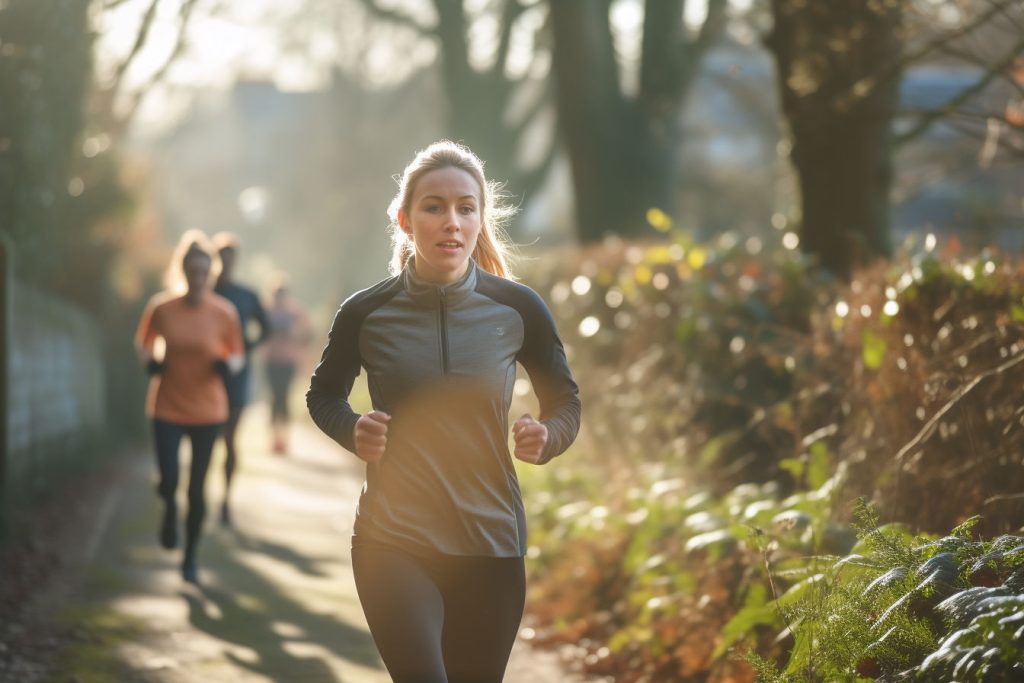In a world where speed and competition often take center stage, the idea of running slowly might seem counterintuitive. However, as the popularity of running continues to soar, particularly among women, two running coaches are advocating for a gentler approach to the sport. Carly Pevreall and Lyndal Maloney believe that embracing a “turtle pace” and gradually building distance is the key to falling in love with running.
Carly Pevreall, a running coach based in Adelaide on the traditional Country of the Kaurna people, discovered the transformative power of slow running during the pandemic. With the purchase of a treadmill on the eve of a COVID lockdown, Carly began running not just for physical goals, but for mental well-being. This newfound passion led her to obtain her running coach certification in January 2023, driven by a desire to help others experience the joy of running at their own pace.
One of the biggest obstacles to embracing slow running, Carly notes, is the fear of judgment and embarrassment. “There’s always kind of been a negative association attached to running slow,” she explains. “It’s so easy to think that person running fast past you is judging you because you’re running slow. The reality is — excuse my language — no-one gives a shit about you and what you’re doing.”
For those just starting out, Carly emphasizes the importance of building gradually and incorporating walking into the routine. “Walking is an essential part of becoming a runner and staying a runner,” she says. Most women in her program begin with 30-second running intervals interspersed with about 4 minutes of walking. While popular apps like couch to 5k can be helpful, Carly cautions that they may be too advanced for some beginners.
Ultra-marathoner and women’s running coach Lyndal Maloney, who lives in the Blue Mountains within the traditional country of the Dharug and Gundungurra peoples, echoes Carly’s sentiments. “The main mistake people make is that they try to do too much too soon and then give up because they hurt themselves or they find it too difficult,” she says. Lyndal advises always starting with a run/walk interval program and working towards a specific goal to maintain motivation.
Setting a target, such as participating in a race or joining a community event like Parkrun, can provide a sense of purpose and connection without the anxiety often associated with competitive running. Lyndal also suggests finding a beautiful location to run, as “the nicer the location, the more enticing it is to get out and run.”
Both Carly and Lyndal emphasize that the journey to becoming a runner is a gradual process that requires patience and self-compassion. By embracing a slower pace and focusing on the mental and emotional benefits of running, individuals can cultivate a lasting love for the sport.
As more women discover the joy of slow running, they are challenging the notion that speed is the ultimate goal. Instead, they are redefining success as the ability to move their bodies, connect with nature, and find inner peace. By sharing their experiences and insights, coaches like Carly Pevreall and Lyndal Maloney are helping to create a more inclusive and welcoming running community, where everyone can find their own pace and purpose.
In a world that often demands instant gratification and quick results, slow running offers a refreshing alternative. It invites us to slow down, be present, and appreciate the journey, one step at a time. As more women embrace this gentle approach to running, they are not only improving their physical health but also discovering a profound sense of self-acceptance and empowerment. So, the next time you lace up your running shoes, remember that there’s no shame in going slow – in fact, it might just be the key to unlocking a lifelong love for the sport.



